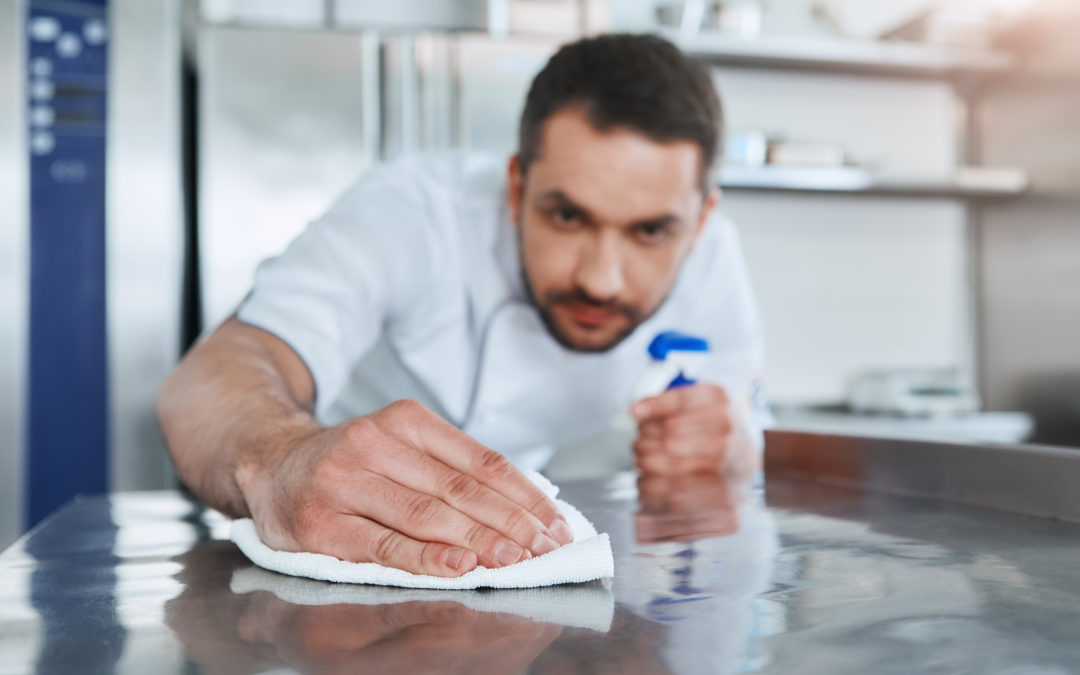One of the biggest problems I see today is how to Preventing Cross Contamination in Food Industry. If you are not sure what cross-contamination is, it would be the transfer of bacteria from one area to the next. For example, around the dish machine, cutting boards, coming in the back door, or even behavior in the waitress station can cause problems. In my years’ experience coming out of food service before going into chemical sales, I can tell you the issues today are still substantial as they were years ago.
So what is cross-contamination, and why is it a big problem? When an object becomes contaminated by contact with another thing already infected, cross-contamination is a big problem because it can cause food poisoning. Food poisoning happens when bacteria are transferred onto food about to be served to customers. To tackle this problem, you need to know when cross-contamination is most likely to happen, how to deal with it, and how to prevent it.
There are two approaches to dealing with cross-contamination: 1) you can deal with it as it happens, or 2) you can prevent it from happening in the first place. In my experience, prevention is the best approach. However, it is impossible to obliterate cross-contamination, so I will be explaining how you can minimize the risk.
Cross-contamination may occur, for example, when you re-use cloths to clean slicers, grinders, and tables. In cutlery, it can happen if you use the same knife to cut both cooked and raw food and store uncovered food nearby. These examples are hard to notice because cross-contamination occurs on a small scale (bacteria and liquids). However, watching for and avoiding these situations from occurring will significantly reduce your chances of cross-contamination.
Read Also: Choosing The Correct Chemical
Front Of House
I have seen that proper sanitization in a restaurant kitchen successfully reduces cross-contamination. If you don’t use the accepted sanitizers, the bacteria will get passed onto the other tables, utensils, and cutlery, and it will spread faster than you think. Unfortunately, simply cleaning will not work; you will need to sanitize properly. Using an adequately marked cleaning and sanitizer bucket for your wipes and changing frequently will need to be done. Usually, you can get test strips from your chemical supplier, who can assist with wall charts and training as well.
Check Out Best Way To Sanitize Your Restaurant Tables
Kitchen Area Reduction Of Cross-Contamination
In avoiding cross-contamination between foods, I can suggest a few tips. First, keeping your raw foods at the bottom of the fridge helps. Also, a separate area will prevent raw meat juices from dripping onto other food. Finally, keeping stored food away from each other is simple and easy to do.
However, preventing cross contamination during the cooking phase where cooked and raw foods are near each other is tricky. Often, we will move back and forth between uncooked and cooked food, which can cause cross-contamination and result in the customers receiving contaminated cooked food. Regularly wash your hands and use a handle sanitizer to prevent this. Then handle the uncooked food first and move on to the cooked food with newly cleaned utensils.
Please feel free to reach out to me if I can ever help with a problem or concern. Hopefully, you will join me on our new podcast, arriving soon.

